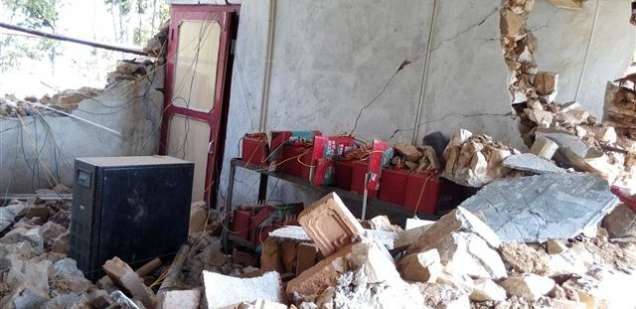CR stations in Nepal struggle to restore broadcasting
108 community radio stations in approximately 30 districts have been affected. But Gorkha FM is one of the first to be back on air in the quake affected areas,
writes PREETI RAGHUNATH.
(Reprinted from CR News. All photographs are from Association of Community Radio Broadcasters Nepal's website.)
The recent devastating earthquake in Nepal, measuring 7.8 on the Richter scale, has affected millions in the country, leading to massive loss of lives and property. Official figures suggest that more than 5500 lives have been lost, with about 8 million affected on the whole. In the face of disaster, radio stations, of which many are community radio stations in Nepal’s case, play a key role in catering to the information needs of the affected.
The state of community radios
“So far, many radio stations in the badly-affected districts of Gorkha, Sindhupalchowk, Ramechap, etc. have been destroyed, especially the ones with weak foundations. We have started looking at the post-effects in general and the exact status of the media, including community radios, can only be ascertained in the days ahead,” said Laxman Pant of UNESCO Nepal.
AMARC Asia-Pacific, meanwhile, issued an update on the status of community radio stations in these affected districts. “Gorkha FM is one of the first local broadcasting services to be back on air in the quake affected areas. Similarly, Ratna Prasad Shrestha, Station Manager of Radio Sindhu, a community radio located in Sindhupalchowk district has informed that his station has also resumed broadcasting. Initial assessment indicates that around 108 community radio stations in approximately 30 districts have been affected. Most are off-air at the moment, owing mainly to equipment damage. While damage to physical structures are quite huge, damage to equipment could be of lesser gravity”, said Suman Basnet, Secretary, AMARC Asia-Pacific.

IRIN, an independent, not-for-profit media organisation, that focuses on humanitarian news and analysis, reports that BBC Media ActionI in Nepal, put out the first ‘lifeline’ programme, ten hours after the earthquake struck.
Community radio, disaster preparedness and redressal
Even as the international community’s aid response is directed to address the effects of the large-scale destruction, community-based efforts in providing key information for evacuation, relief and rehabilitation cannot be over-stated in such critical situations.
The Kobe earthquake of 1995 in Japan led to the setting up of Radio FMYY, when the need for community-based disaster management information was felt. However, community radio stations are no exceptions to falling prey to the vagaries of nature. Community radio stations in Haiti were affected, with a handful of them severely damaged when Haiti was ravaged by an earthquake in 2010.
Key findings from a survey carried out by AMARC Asia-Pacific in 2008-09 among eight countries including Nepal, suggest earthquakes to be among the most frequently occurring natural disasters. The report also highlights that more than half of CR stations surveyed did not have a manual to deal with natural disasters though most face them quite frequently. In addition, more than 60% of CR stations are housed in buildings which are not specifically designed to withstand natural disaster, it adds.

Suman Basnet’s update also suggests that “despite the damage, many stations have informed them that they could restart broadcasting if minor spare parts or replacement for simple devices such as mixers, cables, etc. were made available.”
Way forward
AMARC Asia Pacific also facilitated a coordination meeting in Kathmandu recently to take stock and initiate the next steps in relief operations. The group members, comprising community radio advocates, practitioners and station representatives identified the following districts as the most critically hit: Dhading (two stations), Sindhupalchowk (two stations), Rasuwa, and Gorkha.
The group has agreed that at least one radio station in each district would have to be brought back on air urgently to ensure effective communication to support effective relief operations. A three-member team, including a technical and a production expert, would shortly visit the critical districts to assess the actual damage caused to community radios. The teams were expected to leave Kathmandu on May 1, 2015.
The group also noted that most of the stations in the critically hit districts would not be salvageable in a short time. Consequently, it was agreed that at least seven mobile/suitcase radios were required to support broadcasting in those districts.
Preeti Raghunath is at the University of Hyderabad (with inputs from Suman Basnet, AMARC Asia-Pacific).